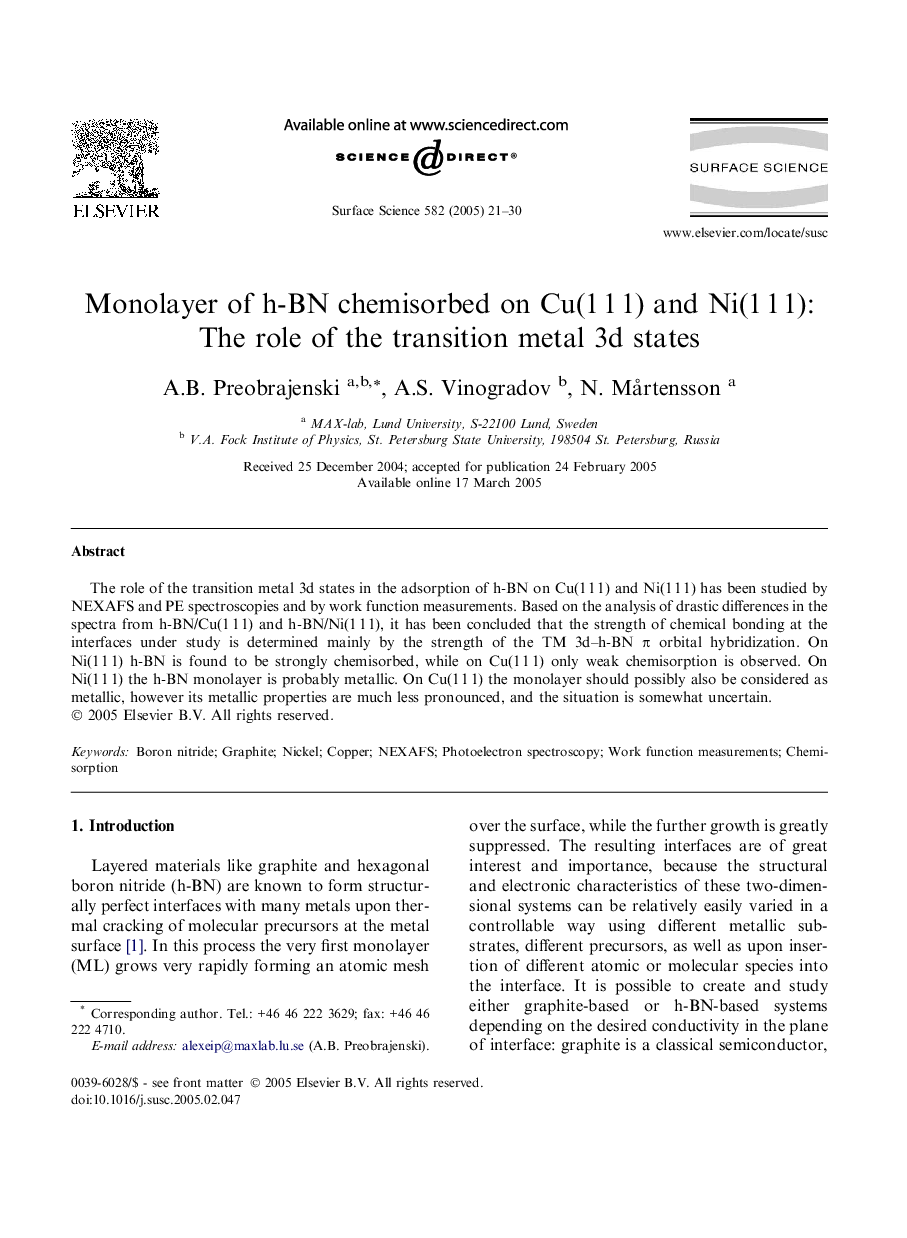| Article ID | Journal | Published Year | Pages | File Type |
|---|---|---|---|---|
| 9594846 | Surface Science | 2005 | 10 Pages |
Abstract
The role of the transition metal 3d states in the adsorption of h-BN on Cu(1Â 1Â 1) and Ni(1Â 1Â 1) has been studied by NEXAFS and PE spectroscopies and by work function measurements. Based on the analysis of drastic differences in the spectra from h-BN/Cu(1Â 1Â 1) and h-BN/Ni(1Â 1Â 1), it has been concluded that the strength of chemical bonding at the interfaces under study is determined mainly by the strength of the TM 3d-h-BN Ï orbital hybridization. On Ni(1Â 1Â 1) h-BN is found to be strongly chemisorbed, while on Cu(1Â 1Â 1) only weak chemisorption is observed. On Ni(1Â 1Â 1) the h-BN monolayer is probably metallic. On Cu(1Â 1Â 1) the monolayer should possibly also be considered as metallic, however its metallic properties are much less pronounced, and the situation is somewhat uncertain.
Keywords
Related Topics
Physical Sciences and Engineering
Chemistry
Physical and Theoretical Chemistry
Authors
A.B. Preobrajenski, A.S. Vinogradov, N. MÃ¥rtensson,
